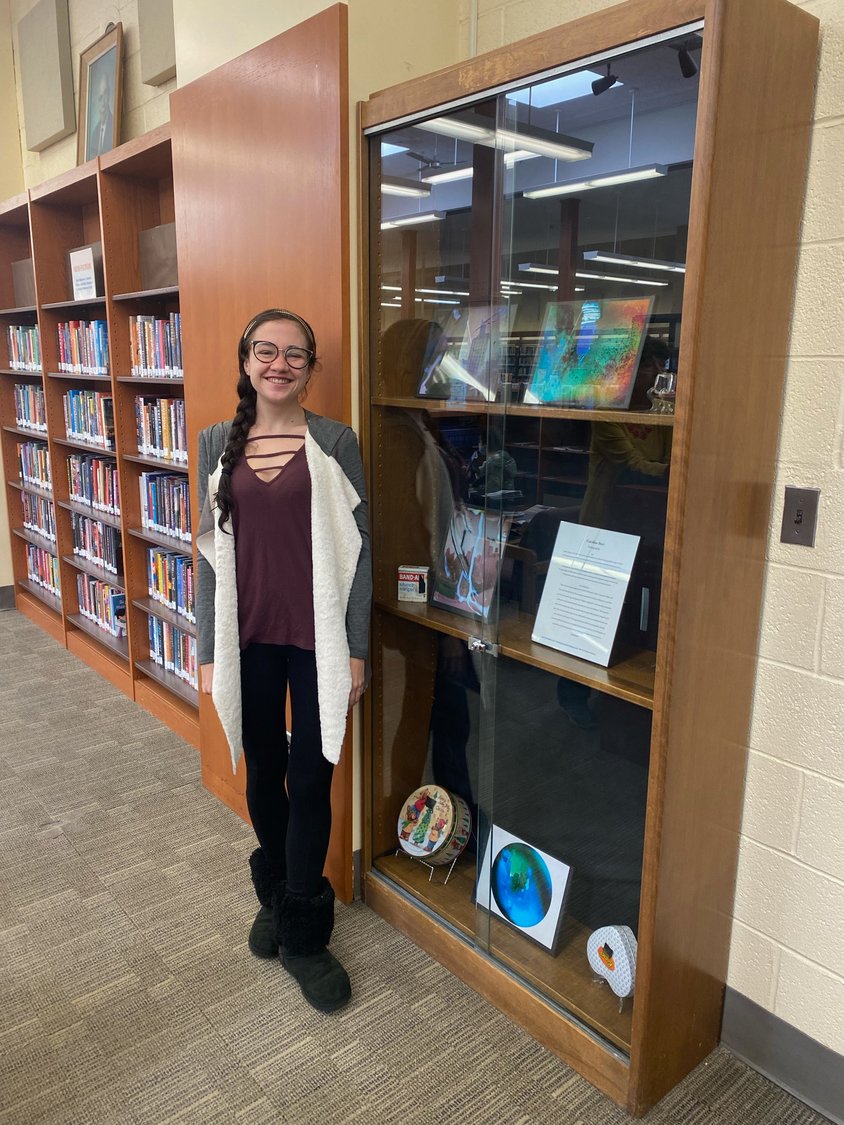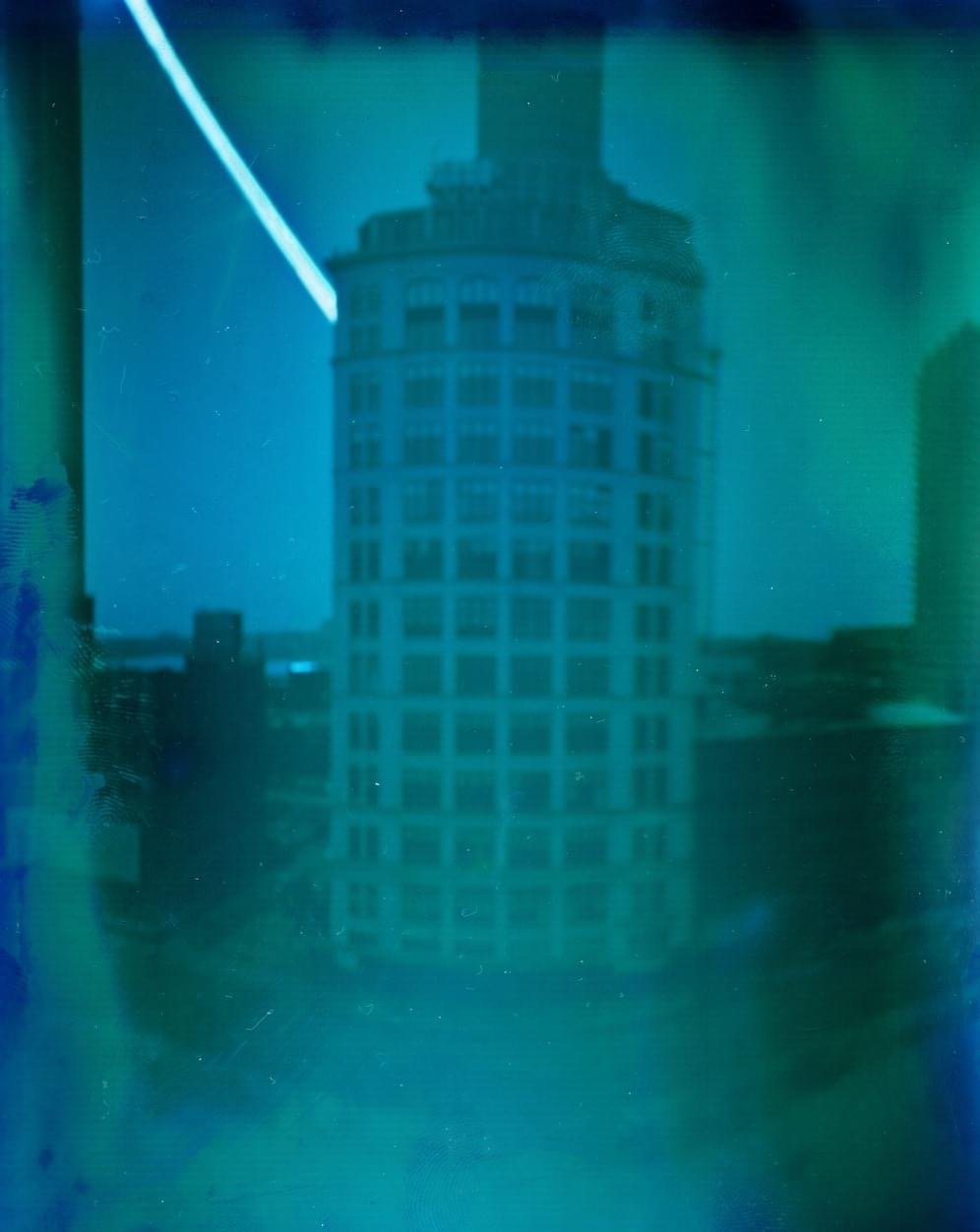Photo artist displays work at Waldinger
Caroline Bert showcases different darkroom procedures that create unique prints
Throughout this month, the Henry Waldinger Memorial Library is showcasing the experimental artwork of New York-based photographer Caroline Bert. The 27-year-old artist is widely known both locally and internationally for her camera-less photography, deploying various techniques such as chemigrams, cyanotypes, lumen printing, collages, sewing, and painting.
Bert talked with the Herald about her work and artistic process in “pushing traditional photography techniques into unconventional circumstances.” The conversation has been edited and condensed.
Herald: When did you start getting into photography?
Bert: I took my first photography class in 10th grade, and I loved it right away. But once I started getting more into the advanced photo classes in high school and learned about alternative processes, I started to feel more comfortable calling myself an artist and realized how much freedom photography gave me.
H: What subjects do you photograph? Do you keep to one subject matter or do a little bit of everything?
B: A little bit of everything – depends on my environment, emotions, what I am trying to convey. Sometimes I work without a “subject,” so to speak, and create abstract shapes and lines on the paper with light-sensitive chemistry to convey emotion rather than a person, place, or thing. I pull inspiration from everywhere.
H: I know you like to experiment with your photography. Do you do this by affecting the film or distorting the images in Photoshop?
B: It depends on what process I’m working with, but I prefer to work analog. I love the darkroom. My work is very nontraditional. I learn the rules with the intention of breaking them. I expose my darkroom paper to light, cross-contaminate and mix my chemistry (with plenty of research and safety protocols in place of course), and when something visually exciting happens, I figure out why and that’s what pushes me to keep experimenting.
Many of my pieces are never finally fixed so they change color over time, and I see it as a visual experience. Other times, I manipulate the image after the print is completed. I cut, collage, sew, and incorporate mixed media. Through experimenting so much I have been able to create some processes of my own. One of them…by placing the chemigrams in pinhole cameras to double expose and [combining] two processes. The other is my precious metals process…that process involves lacquer toners and plays on the barrier between abstract and representational with an antique, nostalgic aesthetic.
H: What made your pictures take off? Were friends sharing them, teachers taking notice?
B: My friends and family would share my work, and my teachers would give me opportunities for recognition and teach me about professionalism early on. Also growing up, I was a competitive dancer and very involved at my dance studio... I would ask the dancers to participate and model for me. This would be fun for me to choreograph compositions and work with models that I had a close bond with. The dancers and their families would come to my shows and support me [and] share my work…The dance community is like a family and will always be a part of me.
H: How did your work start to get picked up internationally, and how does it feel that people all over the world are seeing your images?
B: My work started to get picked up internationally in 2019. I submitted my work to an open call in Venice, Italy through the European Cultural Center. It was very exciting to be selected and to see the photos and hear feedback from people I’ve never met in a place I’ve never been.
H: Did you have college schooling for photography?
B: Yes, I got my bachelor of fine arts in photography from the Long Island University Honors College in 2018 and a master of fine arts in photography at Long Island University in 2021.
H: Do you have any mentors or artists who inspire you?
B: I have many great mentors but two that stand out the most are my [Oceanside] High School photography teacher, Kristin Gemino, and my college photography professor Allison Rufrano. They both went out of their way for me at different points in my career. My artist inspirations include Alison Rossiter, Susan Derges, Anna Atkins, Sandi Daniel and Heather Palecek.
H: Is there anything else you want to say to any aspiring photographers?
B: If you have an idea that excites you, try it. You don’t need fancy equipment to be a good photographer, so don’t get too caught up in all the technology that you forget that you are an artist. Anyone can document a moment or a feeling in time, but no one will do it like you. It’s the artist behind the camera that makes every photograph unique.
Bert’s upcoming exhibition “Precious Metals” will be on view at the Island Park Public Library from April 2 to 30.










